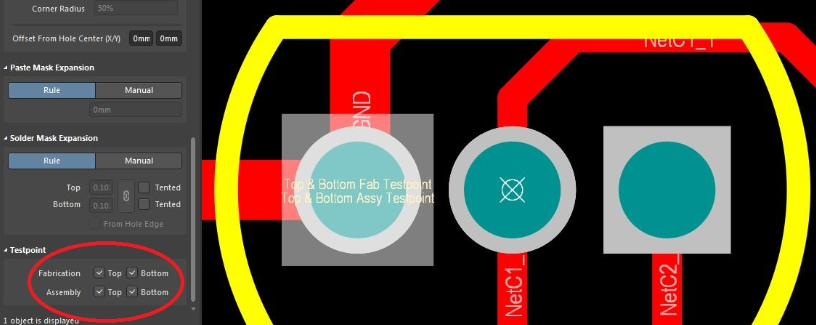In the fast-paced world of automotive electronics, designing a reliable Engine Control Unit (ECU) PCB is critical for vehicle performance and safety. One key aspect often overlooked is the strategic placement of test points. So, how can you ensure effective test point placement in ECU PCB design? The answer lies in prioritizing accessibility, coverage of critical nets, and adherence to automotive testing standards to improve PCB testability and streamline diagnostics.
In this comprehensive guide, we’ll dive deep into practical strategies for placing test points on ECU PCBs, tailored specifically for automotive applications. Whether you’re an engineer working on PCB design for testing or looking to enhance automotive PCB testing processes, this blog will provide actionable insights to boost efficiency and reliability. Let’s explore the best practices for test point strategy and how they can transform your design process.
Why Test Points Matter in ECU PCB Design
Test points are small, designated areas on a printed circuit board (PCB) that allow engineers to probe and measure electrical signals during testing and debugging. In the context of ECU PCB design, where systems control critical functions like engine timing, fuel injection, and emission controls, test points are indispensable. They enable quick identification of faults, ensure functionality, and validate performance under harsh automotive conditions.
Without a well-thought-out test point strategy, diagnosing issues in an ECU can become time-consuming and costly. Poorly placed test points may be inaccessible after assembly, leading to delays in testing or even redesigns. For automotive PCB testing, where reliability is non-negotiable, a robust test point layout can mean the difference between a successful product launch and a costly recall.

Key Challenges in ECU PCB Test Point Placement
Designing test points for ECU PCBs comes with unique challenges due to the complexity and constraints of automotive systems. Here are some common hurdles engineers face:
- Space Constraints: ECU PCBs are often compact, leaving little room for additional test points without interfering with other components.
- Environmental Factors: Automotive PCBs must withstand extreme temperatures, vibrations, and humidity, which can affect test point reliability if not designed properly.
- Signal Integrity: High-speed signals in ECUs (often operating at frequencies above 100 MHz) require careful placement to avoid interference or noise during testing.
- Accessibility: Test points must be reachable by probes even after the PCB is assembled into the ECU housing.
Addressing these challenges requires a strategic approach to test point placement, balancing design constraints with the need for effective diagnostics.
Top Strategies for Effective Test Point Placement in ECU PCB Design
Let’s break down the most effective strategies for placing test points on ECU PCBs to improve testability and ensure reliable automotive PCB testing. These tips are designed to help engineers create designs that are easier to debug and validate.
1. Prioritize Accessibility for Probes
One of the most important rules in test point placement is ensuring that each point is accessible by test probes, even after the PCB is fully assembled. In ECU designs, where components are often densely packed, this can be tricky. Place test points on the top or bottom layer of the PCB, avoiding areas that will be covered by heat sinks, connectors, or enclosures.
For example, if a critical net for engine timing control operates at 5V and needs frequent testing, position the test point near the edge of the board or in an area free from tall components. A clearance of at least 2.5 mm around each test point is recommended to allow probe access without risking damage to nearby parts.
2. Cover Critical Nets for Comprehensive Testing
To maximize testability, ensure that test points cover all critical nets in the ECU design. Critical nets include power lines, ground connections, and high-speed signal paths like CAN bus lines (often operating at 1 Mbps or higher). By placing test points on these nets, you can quickly verify voltage levels, signal integrity, and continuity during automotive PCB testing.
A good rule of thumb is to allocate at least one test point per critical net. For instance, on a power supply line delivering 12V to the ECU’s microcontroller, a test point can help confirm stable voltage under load conditions. This approach reduces the risk of missing faults in key areas of the design.

3. Maintain Signal Integrity with Proper Spacing
In high-speed ECU designs, signal integrity is paramount. Test points can introduce capacitance or noise if placed too close to sensitive traces. To avoid this, maintain a minimum spacing of 1 mm between test points and high-speed signal lines (e.g., those carrying data at 50 MHz or more). Additionally, avoid placing test points directly on differential pairs, as this can disrupt impedance matching, which is often set at 100 ohms for automotive communication protocols.
If a test point must be near a high-speed trace, consider using a small via as the test point rather than a large pad. This minimizes the impact on signal performance while still allowing for measurements.
4. Use Standard Test Point Sizes and Shapes
Consistency in test point design simplifies the testing process. Use standardized sizes and shapes, such as circular pads with a diameter of 1.0 mm to 1.5 mm, to ensure compatibility with common test probes. Larger pads may be necessary for high-current nets (e.g., those carrying 5A or more), but avoid oversized pads that take up unnecessary space on compact ECU PCBs.
Label each test point clearly with silkscreen markings (e.g., TP1, TP2) to help technicians identify them during debugging. This small step can save significant time during automotive PCB testing.
5. Consider Automated Testing Requirements
Many automotive manufacturers rely on automated testing systems like In-Circuit Testing (ICT) or Flying Probe Testing for ECU validation. These systems require test points to be placed in specific patterns or grids for compatibility with test fixtures. When designing your PCB, consult the testing team to understand their requirements and position test points accordingly.
For ICT, test points should ideally be on a 2.54 mm grid to match standard test fixture pin spacing. This ensures that automated probes can access all necessary points without custom setups, saving time and cost in production testing.
6. Account for Environmental Stress in Automotive Applications
Automotive ECUs operate in harsh environments, with temperatures ranging from -40°C to 85°C and constant vibration. Test points must be robust enough to withstand these conditions without degrading. Use plated-through-hole (PTH) test points instead of surface-mount pads for added durability, as PTH designs are less likely to crack under thermal stress.
Additionally, avoid placing test points in areas prone to moisture ingress or mechanical stress, such as near enclosure edges or mounting holes. This ensures long-term reliability during field testing and real-world use.
7. Integrate Test Points Early in the Design Process
Finally, don’t treat test points as an afterthought. Integrate them into your ECU PCB design from the schematic stage, identifying critical nets and potential trouble spots early on. Use design software tools to simulate signal paths and verify that test point placement won’t interfere with functionality.
By planning ahead, you can avoid costly redesigns and ensure that every test point serves a purpose. For instance, if a microcontroller output pin drives a critical actuator at 3.3V, mark it for a test point during the initial layout to confirm signal behavior under various operating conditions.
Benefits of a Strong Test Point Strategy for ECU PCBs
Implementing these test point placement strategies offers several advantages for ECU PCB design and automotive PCB testing:
- Faster Debugging: Well-placed test points reduce the time needed to identify and fix issues, accelerating the development cycle.
- Improved Reliability: Comprehensive test coverage ensures that potential faults are caught before the ECU reaches the field.
- Cost Savings: Efficient testing reduces labor and equipment costs, especially in high-volume automotive production.
- Compliance with Standards: Proper test point design helps meet stringent automotive standards like ISO 26262 for functional safety.
By focusing on improving PCB testability, you’re not just enhancing the design process—you’re also contributing to safer, more reliable vehicles.
Common Mistakes to Avoid in Test Point Placement
Even experienced engineers can make errors when placing test points on ECU PCBs. Here are a few pitfalls to watch out for:
- Overcrowding Test Points: Too many test points in a small area can lead to clutter, making probing difficult and increasing the risk of short circuits.
- Ignoring Assembly Constraints: Failing to account for the final assembly (e.g., enclosures or conformal coating) can render test points unusable.
- Neglecting Documentation: Without clear labeling or documentation, technicians may struggle to locate or interpret test points during testing.
Avoiding these mistakes requires careful planning and collaboration between design, testing, and manufacturing teams.
Conclusion: Elevate Your ECU PCB Design with Strategic Test Points
Effective test point placement is a game-changer for ECU PCB design, offering a direct path to improved testability, faster diagnostics, and enhanced reliability in automotive applications. By prioritizing accessibility, covering critical nets, maintaining signal integrity, and planning for automated testing, you can create designs that stand up to the rigors of automotive PCB testing.
Start implementing these strategies in your next project to see the difference a thoughtful test point strategy can make. With the right approach, you’ll not only streamline your testing process but also contribute to building safer, more dependable vehicles for the road ahead.
 ALLPCB
ALLPCB







